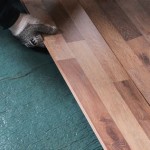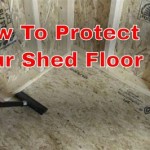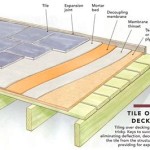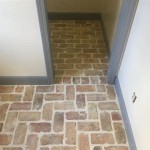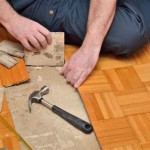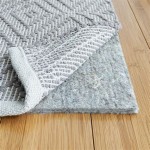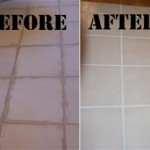How To Replace Termite Damaged Floor Joists
Termite damage can compromise the structural integrity of a building, and floor joists are particularly vulnerable. Timely identification and replacement of damaged joists are crucial to prevent further deterioration and potential safety hazards. This article provides a detailed guide on how to replace termite-damaged floor joists, covering essential steps from assessment to installation.
### Assessing the Damage and Planning the RepairThe initial step involves a thorough assessment of the damage extent. This requires careful inspection of the floor joists, subfloor, and surrounding areas for signs of termite activity. Probe the wood with a screwdriver or awl to identify weakened or hollow sections. The extent of the damage will determine the necessary repair strategy. It is vital to identify the termite species and implement appropriate treatment methods to prevent further infestation. Consult with a pest control professional for effective termite eradication solutions.
Safety is paramount. Before commencing any work, ensure the area is properly ventilated and wear appropriate personal protective equipment (PPE), including safety glasses, a dust mask, gloves, and sturdy work boots. Disconnect electrical wiring or plumbing that may be running through or near the damaged joists to avoid potential hazards.
Planning the repair involves determining the length and number of joists to be replaced. Measure the span between the supporting walls or beams accurately. Consider the joist spacing and ensure the new joists match the existing ones in terms of size, material, and load-bearing capacity. A building permit may be required, depending on local regulations. Research and obtain any necessary permits before starting the project.
Gather all necessary tools and materials. This includes: new lumber (matching the existing joist dimensions and grade), measuring tape, saw (circular saw or reciprocating saw), hammer or nail gun, drill, level, shims, construction adhesive, nails or screws, pry bar, safety glasses, dust mask, gloves, and a jack (hydraulic or screw jack) with supporting posts.
### Removing the Damaged Joist(s)Before removing the damaged joist, provide temporary support to the floor above to prevent sagging or collapse. This can be achieved using a jack post system. Position the jack posts directly under the floor joists adjacent to the damaged one(s). Ensure the jack posts are resting on a solid, level surface and are securely braced. Slowly and evenly raise the jack posts until they bear the load of the floor above. Monitor the floor for any signs of excessive movement or stress.
Once the floor is adequately supported, begin the removal process. Use a pry bar to carefully detach the damaged joist from the subfloor above and the supporting walls or beams at each end. If nails or screws are holding the joist in place, use a hammer or drill to remove them. If the joist is heavily damaged, it may be necessary to cut it into smaller, manageable sections for easier removal. Use a reciprocating saw to cut the joist at intervals, taking care not to damage the surrounding structures.
When the joist is free from its attachments, carefully remove it from the opening. Inspect the surrounding areas for any additional damage or signs of termite activity. Clean the area thoroughly, removing any debris, loose wood, or termite nests. If significant damage is found in adjacent joists or supporting structures, address those issues before proceeding with the joist replacement.
### Installing the New Joist(s)Before installing the new joist, treat it with a borate-based wood preservative to protect it from future termite infestations. Apply the preservative according to the manufacturer's instructions, ensuring thorough coverage of all surfaces.
Measure the opening where the damaged joist was removed and cut the new joist to the correct length. It is crucial to ensure the new joist fits snugly into the opening. If necessary, make slight adjustments with a saw or plane to achieve a proper fit.
Apply construction adhesive to the ends of the new joist where it will contact the supporting walls or beams. This will provide added strength and prevent squeaking. Carefully position the new joist into the opening, ensuring it is aligned with the adjacent joists. Use a hammer or nail gun to secure the joist to the supporting walls or beams. Use appropriate fasteners, such as nails or screws, that are specifically designed for structural applications.
Attach the new joist to the subfloor above using nails or screws. Ensure the fasteners are driven in at an angle to provide maximum holding power. If the subfloor is damaged, it may be necessary to replace it in the affected area. When securing the joist to the subfloor, be careful not to overdrive the fasteners, as this can damage the wood.
Check the level of the new joist using a level. If necessary, use shims to bring the joist into perfect alignment with the adjacent joists. Insert the shims between the joist and the supporting walls or beams until the joist is level. Secure the shims in place with construction adhesive or nails.
Once the new joist is securely installed and level, gradually lower the jack posts, removing the temporary support. Monitor the floor for any signs of sagging or movement. If the floor remains stable, the joist replacement is successful. If any issues are observed, re-engage the jack posts and re-evaluate the installation.
Repeat the above steps for any additional joists that require replacement. Ensure all new joists are properly installed, level, and securely attached to the surrounding structures.
### Reinforcing Existing Joists Instead of ReplacingIn some cases, if the damage to the joist is not extensive, reinforcement might be a viable alternative to complete replacement. Reinforcement involves strengthening the existing joist with additional materials, such as sistering a new joist or attaching steel plates. This approach can save time and resources, but it is essential to carefully evaluate the extent of the damage and the load-bearing capacity of the reinforced joist.
Sistering involves attaching a new joist alongside the damaged one. The new joist should be the same size and material as the existing one. Apply construction adhesive to the surfaces of the two joists that will be in contact. Use nails or screws to securely fasten the new joist to the existing one. Ensure the fasteners are spaced evenly and driven in at an angle to provide maximum holding power. Sistering can significantly increase the load-bearing capacity of the joist.
Attaching steel plates involves securing steel plates to the sides of the damaged joist. The steel plates should be of sufficient thickness and width to provide adequate reinforcement. Apply construction adhesive to the surfaces of the joist and the steel plates that will be in contact. Use bolts or screws to securely fasten the steel plates to the joist. Ensure the fasteners are spaced evenly and are of the appropriate size and strength. Steel plates can provide excellent reinforcement for damaged joists.
Before deciding to reinforce a joist instead of replacing it, consult with a structural engineer or experienced contractor to ensure the reinforcement method is appropriate for the specific situation. They can assess the extent of the damage, calculate the load-bearing capacity of the reinforced joist, and provide recommendations on the best course of action.
After the joist replacement or reinforcement is complete, conduct a final inspection of the area. Check for any signs of weakness or instability. Ensure all fasteners are securely in place and the joists are properly aligned. If necessary, apply a sealant or caulking to any gaps or cracks. Replace any flooring or other materials that were removed during the repair process. Once the area is deemed safe and structurally sound, the project is complete.

Fixing Rotted Sill Plate And Termite Damage In Floor Joists

Fixing Termite Damage Part Three Rim Joist End And Sill Plate

Fixing Rotted Sill Plate And Termite Damage In Floor Joists
Advice 2 X10 Floor Joist Repair In 1941 House With Termite Damage Contractor Talk Professional Construction And Remodeling Forum

Sistering Floor Joists Due To Termite Damage In Crawlspace And How Use A Nail Gun

Floor Joist End Repairs

Crawlspace Necessary Repair Of Termite Damage To Floor Joists In Crawl Space Home Improvement Stack Exchange
Repairing A Termite Damaged House Jlc

Termite Damage To Joists Pinnacle Home Inspections

Termite Damage Repair Contractor Contact Us Get It Repaired
See Also
